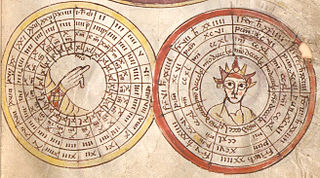The minute is a unit of time or angle. As a unit of time, the minute is most of times equal to 1⁄60 of an hour, or 60 seconds. In the UTC time standard, a minute on rare occasions has 61 seconds, a consequence of leap seconds. As a unit of angle, the minute of arc is equal to 1⁄60 of a degree, or 60 seconds. Although not an SI unit for either time or angle, the minute is accepted for use with SI units for both. The SI symbols for minute or minutes are min for time measurement, and the prime symbol after a number, e.g. 5′, for angle measurement. The prime is also sometimes used informally to denote minutes of time.

The little stint, is a very small wader. It breeds in arctic Europe and Asia, and is a long-distance migrant, wintering south to Africa and south Asia. It occasionally is a vagrant to North America and to Australia. The genus name is from Ancient Greek kalidris or skalidris, a term used by Aristotle for some grey-coloured waterside birds. The specific minuta is Latin for "small.

Tagetes is a genus of annual or perennial, mostly herbaceous plants in the sunflower family (Asteraceae). It was described as a genus by Linnaeus in 1753.
Marchena is a genus of jumping spiders only found in the United States. Its only described species, M. minuta, dwells on the barks of conifers along the west coast, especially California, Washington and Nevada.

Scala is a town and comune in the province of Salerno in the Campania region of south-western Italy. It is located on a rocky hill c. 400 m over the sea level and is part of the Amalfi Coast.

The white-bellied big-eared bat is a bat species from South and Central America.

The white-vented euphonia is a species of bird in the Fringillidae family.

A moment (momentum) was a medieval unit of time. The movement of a shadow on a sundial covered 40 moments in a solar hour. An hour in this case meant one twelfth of the period between sunrise and sunset. The length of a solar hour depended on the length of the day, which in turn varied with the season, so the length of a moment in modern seconds was not fixed, but on average, a moment corresponded to 90 seconds. A day was divided into 24 hours of either equal or unequal lengths, the former being called natural or equinoctial, and the latter artificial. The hour was divided into four puncta (quarter-hours), ten minuta, or 40 momenta.

Tagetes minuta is a tall upright marigold plant from the genus Tagetes, with small flowers, native to the southern half of South America. Since Spanish colonization, it has been introduced around the world, and has become naturalized in Europe, Asia, Australasia, North America, and Africa. Tagetes minuta has numerous local names that vary by region, most commonly found in the literature as chinchilla, chiquilla, chilca, zuico, suico, or anisillo. Other names include muster John Henry, Southern Cone marigold, Khakibos, stinking roger, wild marigold, and black mint.
Hemiconcavodonta is an extinct genus of bivalve in the extinct family Praenuculidae. The genus is one of three genera in the subfamily Concavodontinae. Hemiconcavodonta is known solely from late Ordovician, Caradoc epoch, fossils found in South America. The genus currently contains a single accepted species, Hemiconcavodonta minuta.

Zephyranthes minuta is a plant species very often referred to as Zephyranthes grandiflora, including in Flora of North America. The latter is, however, an illegitimate name because the original author in coining the name Zephyranthes grandiflora listed the older name Amaryllis minuta as a synonym. This makes "minuta" the acceptable epithet under the ICN.
Calliini is a tribe of longhorn beetles of the Lamiinae subfamily.
Asemolea is a genus of longhorn beetles in the tribe Calliini.
Asemolea crassicornis is a species of beetle in the family Cerambycidae. It was described by Bates in 1881. It is known from Mexico and Belize.
Asemolea flava is a species of beetle in the family Cerambycidae. It was described by Martins and Galileo in 2006. It is found in Costa Rica.
Asemolea macaranduba is a species of beetle in the family Cerambycidae. It was described by Galileo and Martins in 1998. It is known from Brazil.
Asemolea purpuricollis is a species of beetle in the family Cerambycidae. It was described by Bates in 1885. It is known from Panama.
Asemolea setosa is a species of beetle in the family Cerambycidae. It was described by Bates in 1881. It is known from Guatemala and Honduras.
Gerd Haxhiu is an Albanian football coach who has managed Apolonia Fier, Bylis Ballsh, Skënderbeu Korçë, Besa Kavajë and he is currently the head coach of Luftëtari Gjirokastër.

Marsilea minuta, or dwarf waterclover is a species of aquatic fern in the family Marsileaceae. It is not to be confused with Marsilea minutaE.Fourn. 1880, which is a synonym for Marsilea vestita. Other common names include gelid waterklawer, small water clover, airy pepperwort, and pepperwort, though the lattermost also applies to plants in the genus Lepidium. In French it is called marsilea à quatre feuilles and petite marsilée, the latter appearing to be a calque with the Latin botanical name. In Chinese it is 南国田字草, literally "southern field word grass," referencing the similarity of the leaflet shape to the Chinese character for "field." The Koch Rajbongshi people and Garo people call it shusni shak. It is called 'শুশনি শাক' in Bengali. In parts of India it can be called sunisanakka In Indonesian it is semanggi, but this name also applies to Marsilea crenata. In Japanese it is nangokudenjiso and in Thai it is phakwaen. In Malaysian it is tapak itek. In the Philippines it is kaya-kayapuan.











